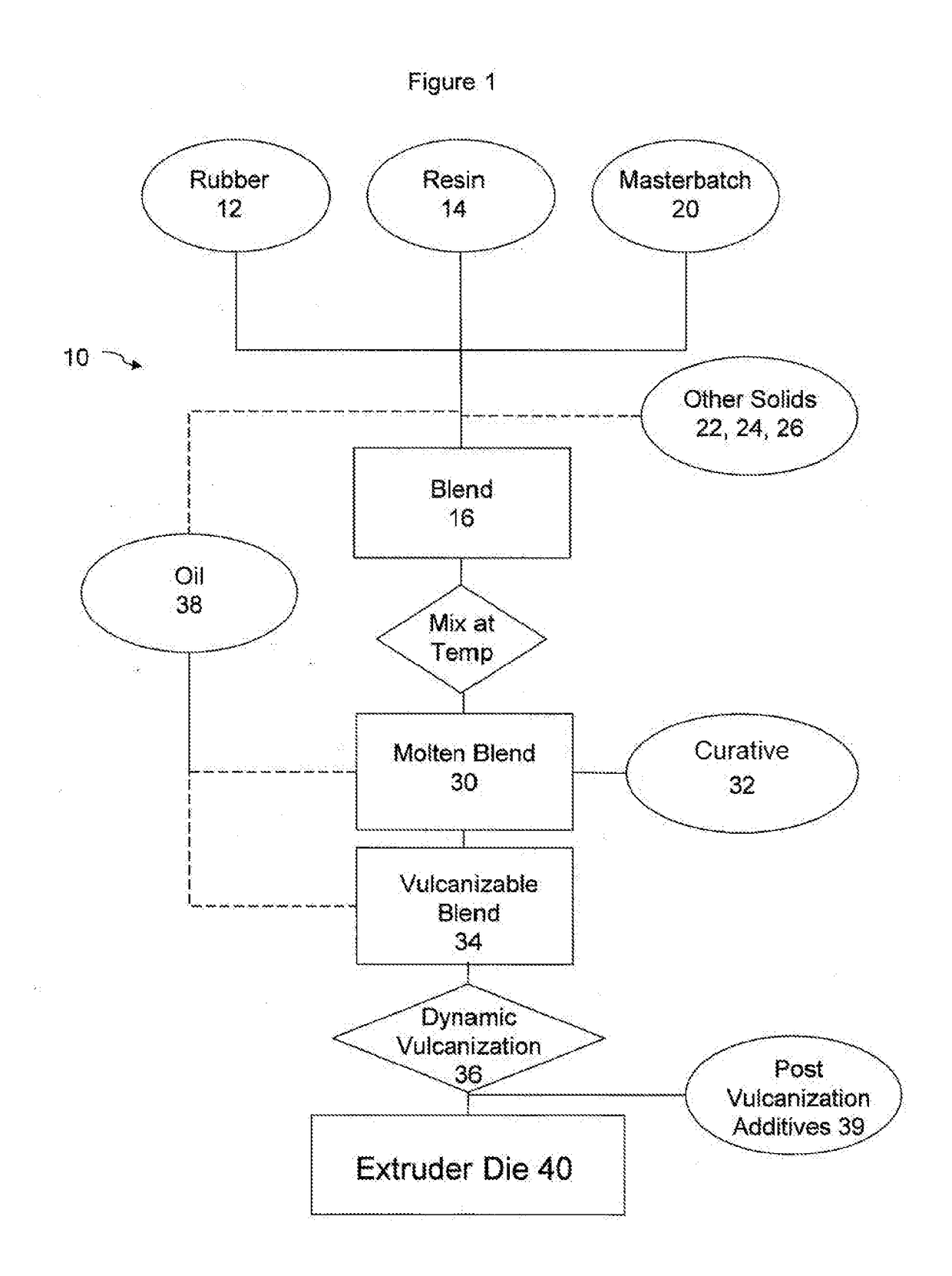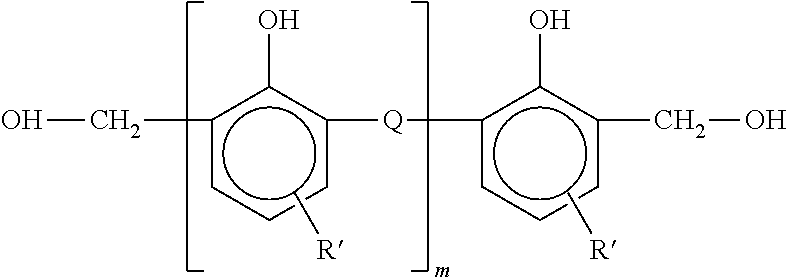Method of Making Thermoplastic Vulcanizates and Thermoplastic Vulcanizates Made Therefrom
- Summary
- Abstract
- Description
- Claims
- Application Information
AI Technical Summary
Benefits of technology
Problems solved by technology
Method used
Image
Examples
examples
[0110]In order to demonstrate the practice of the present invention, the following examples have been prepared and tested. The examples should not, however, be viewed as limiting the scope of the invention.
Test Methods
[0111]Specific gravity was determined according to ASTM D-792. Shore A and Shore D hardness were determined according to ISO 868. Data for modulus at 100% extension to (“M100”), ultimate tensile strength (“UTS”) and elongation at break (“UE”), were determined according to ISO 37 at 23° C. (unless otherwise specified) at 50 mm per minute by using an Instron testing machine. “LCR” is a measurement of viscosity in Pa·sec at 1200 sec−1 shear rate using Lab Capillary Rheometer from Dynisco, per method described in ASTM D 3835.
[0112]“WtGn %” is a measurement of the amount of oil absorbed by the sample in an oil swell resistance test. The test is based on ASTM D-471, and requires a sample of thermoplastic vulcanizates to be immersed in IRM 903 oil for 24 hours at 121° C. The ...
PUM
| Property | Measurement | Unit |
|---|---|---|
| Percent by mass | aaaaa | aaaaa |
| Particle diameter | aaaaa | aaaaa |
| Particle diameter | aaaaa | aaaaa |
Abstract
Description
Claims
Application Information
 Login to View More
Login to View More - R&D Engineer
- R&D Manager
- IP Professional
- Industry Leading Data Capabilities
- Powerful AI technology
- Patent DNA Extraction
Browse by: Latest US Patents, China's latest patents, Technical Efficacy Thesaurus, Application Domain, Technology Topic, Popular Technical Reports.
© 2024 PatSnap. All rights reserved.Legal|Privacy policy|Modern Slavery Act Transparency Statement|Sitemap|About US| Contact US: help@patsnap.com










